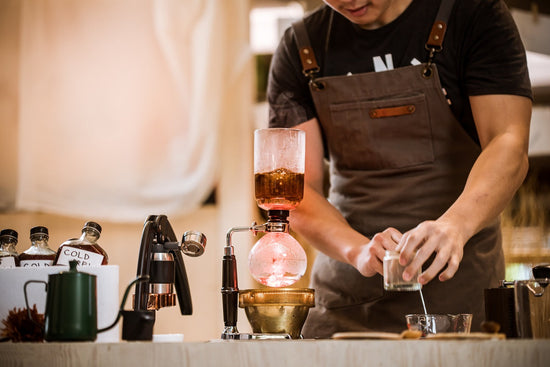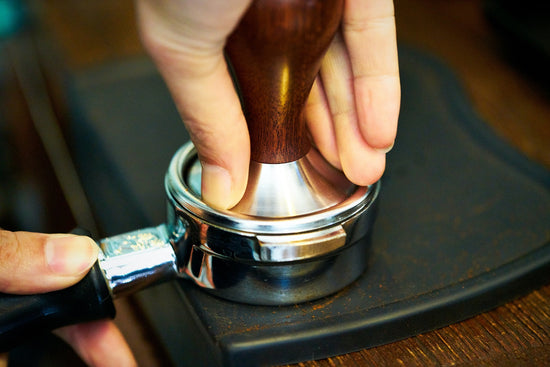Exploring the Roast Curve: Art Meets Precision in Roasting
Unveiling the Roast Curve: Where Art Meets Science at Redber Coffee Roasters
For coffee enthusiasts, the journey from bean to cup is an intriguing one. We savor the complex flavors dancing on our palates, rarely considering the meticulous process behind them. At Redber Coffee, we believe the key to unlocking a coffee's true potential lies in the roast curve . This seemingly technical term embodies the heart of our craft, where art and science intertwine to create exceptional coffee experiences.
What is a Roast Curve?
Imagine a graph with time on the X-axis and temperature on the Y-axis. The roast curve depicts the temperature profile of coffee beans throughout the roasting process. It's a visual representation of the intricate dance between heat application and the chemical transformations taking place within the beans.

The Art of the Roast Curve
While precise equipment plays a crucial role, creating a phenomenal roast curve demands an element of artistry. Our experienced roasters possess a deep understanding of coffee origins and their unique flavour profiles. They meticulously analyse each bean type, considering factors like density, moisture content, and desired taste characteristics.
This knowledge guides them in crafting a customised roasting approach . By manipulating the roast curve – adjusting the rate of temperature increase, controlling heat application duration at specific stages, and implementing cooling techniques – our roasters unlock the inherent flavors locked within the beans.
Cons:
- Subtle: Some may find it too basic or underestimate its importance.
- Balance: Those with balance issues may find it challenging initially.
Science Underpins the Art:
Redber Coffee Roasters leverages cutting-edge technology to ensure consistency and precision in our roasting approach. We utilize state-of-the-the-art roasting machines equipped with advanced data loggers . These sophisticated tools capture the roast curve in real-time, allowing our roasters to monitor the process meticulously.
The data provides valuable insights, enabling adjustments to be made on the fly. This scientific approach ensures we achieve the desired roast profile consistently, delivering a cup of coffee that reflects the unique character of each origin.

"Coffee, the favorite drink of the civilised world"
Exploring the Different Stages of a Roast Curve
A typical roast curve can be broadly divided into three key stages, each with a profound impact on the final flavor profile:
Drying: In this initial phase, moisture evaporates from the beans as they are exposed to gentle heat. This stage lays the foundation for even roasting and flavor development. A shorter drying phase can lead to a denser bean with brighter acidity, while a longer drying time can result in a more mellow cup.
Maillard Reaction: As the temperature rises, a chemical reaction known as the Maillard reaction takes place. This is where the magic happens! The beans start to brown, and complex flavor compounds begin to develop, laying the foundation for the final cup profile. By extending the Maillard phase , our roasters can coax out caramelly sweetness and nutty notes. Conversely, a shorter Maillard phase emphasises the bean's natural acidity and fruit flavors.
First Crack & Second Crack: These are distinct pops and crackles heard during the roast. The first crack signifies the rapid expansion of moisture within the beans. The second crack, a louder and more sustained sound, indicates the breakdown of cell walls and the formation of volatile flavor compounds. The timing and intensity of the roast after first crack is crucial. A shorter development phase after first crack results in a lighter roast with bright acidity and delicate flavors. Conversely, a longer development phase leads to a darker roast with a fuller body, pronounced caramelisation, and smokier notes.

The Art of Balancing Acidity, Body, and Flavor
By manipulating the roast curve, especially during the Maillard reaction and development phases, our roasters can influence the balance of key taste attributes in the final cup. Here's a deeper dive:
Acidity: A light roast with a shorter Maillard phase and shorter development after first crack preserves the bean's natural acidity. This translates to a bright, lively cup with citrusy or berry notes.
Body: Extending the Maillard reaction and development time allows for more complex sugars and caramelization to occur. This leads to a fuller-bodied coffee with a heavier mouthfeel and pronounced sweetness.
Flavor: The specific roast profile chosen by our roasters unlocks a spectrum of flavors within the beans. Lighter roasts emphasize the origin characteristics , highlighting floral, fruity, or tea-like notes. Darker roasts showcase developed flavors like chocolate, caramel, and nuts.

At Redber Coffee, we believe in exploring the spectrum of possibilities. We offer a variety of roast profiles for each coffee origin, catering to diverse palates. Whether you crave a bright and lively cup or a smooth and mellow experience, we have a roast curve that will tantalize your taste buds.
Frequently Asked Questions
1. What are some common mistakes beginners make with roast curves?
- Rushing the roast: A proper roast takes time for the beans to develop evenly. Skipping stages can lead to uneven roasting or underdeveloped flavors.
- Not using a data logger: Tracking your roast curve allows you to analyze your results and make adjustments for future batches.
- Focusing solely on time: Bean characteristics and environmental factors can influence roast times. Relying solely on time targets can lead to inconsistencies.
2. How can I learn more about interpreting roast curves?
- Explore online resources: Numerous websites and articles offer in-depth explanations of roast curves and their impact on flavor.
- Attend a coffee roasting workshop: Redber Coffee Roasters offers workshops that provide hands-on experience with interpreting roast curves.
- Connect with other coffee enthusiasts: Online forums and communities allow you to learn from experienced roasters and share your own experiences.
3. What if I prefer a lighter or darker roast?
We offer a variety of roast profiles for each coffee origin! If you enjoy a brighter cup with pronounced acidity, look for coffees roasted with a shorter Maillard phase and shorter development after first crack . Conversely, if you prefer a fuller-bodied coffee with caramelly sweetness, explore our darker roasts with a longer development phase .
4. Can I roast coffee at home and achieve good results?
Absolutely! Home roasting equipment is readily available, and with practice, you can achieve fantastic results. Remember, it's a journey of exploration. Be patient, experiment with different roast profiles, and most importantly, have fun!
Products Featured In This Blog


